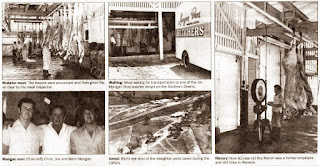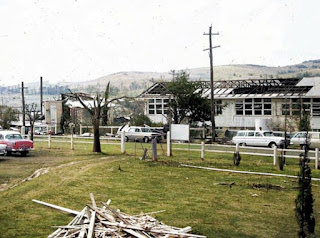THE SPREADBOROUGHS
The Spreadboroughs at “Sunnyside” in Cedar St, Killarney.
Octavius was born and educated in Warwick before selecting a block of land in Killarney where he conducted a butchering business for many years. Later, assisted by his eldest son Irwin, he took up dairying, which occupation he followed almost to the end of his life.
His tall, erect figure was seen regularly walking to the milking yard followed by his faithful dog. Affectionately known as 'Tave', he was respected by all in the community and was a foundation and life member of the Killarney and District Agricultural Society to which he gave invaluable service, particularly as chief outside steward at show time.
A staunch member of the Church of England Parochial Council, his tact and sense of humour relieved many a tense moment in knotty deliberations. He was also church bell ringer for many years and a friend and adviser to the Killarney Parish from the time it was extended to Maryvale and Yangan until his death on 15 February 1945, at the age of 85. At the end of his life, he was nursed by his wife Eliza and daughters, Miss Ellie Spreadborough and Mrs Herbert Collins (Warwick).
Octavius had married Eliza (Elizabeth) Grayson on 28 March 1883. She was born 1 November 1861 in Boconnell, County Armagh, Ireland. Her parents, John Grayson (1823-1907) and Jane Irwin (1819-1899), had migrated to Australia when Elizabeth was two years old, setting sail for Australia from Liverpool, England on the ship ‘Ariadne’ and arriving in Brisbane on 3 January 1861.
Elizabeth was an ardent worker for the Church of England Guild, of which body she was a vice-president. She died on 10 September 1953, at the age of 91, and is buried with her husband in the Killarney cemetery. Three of their four sons (Robert, Frank and George) served in the First World War.



























